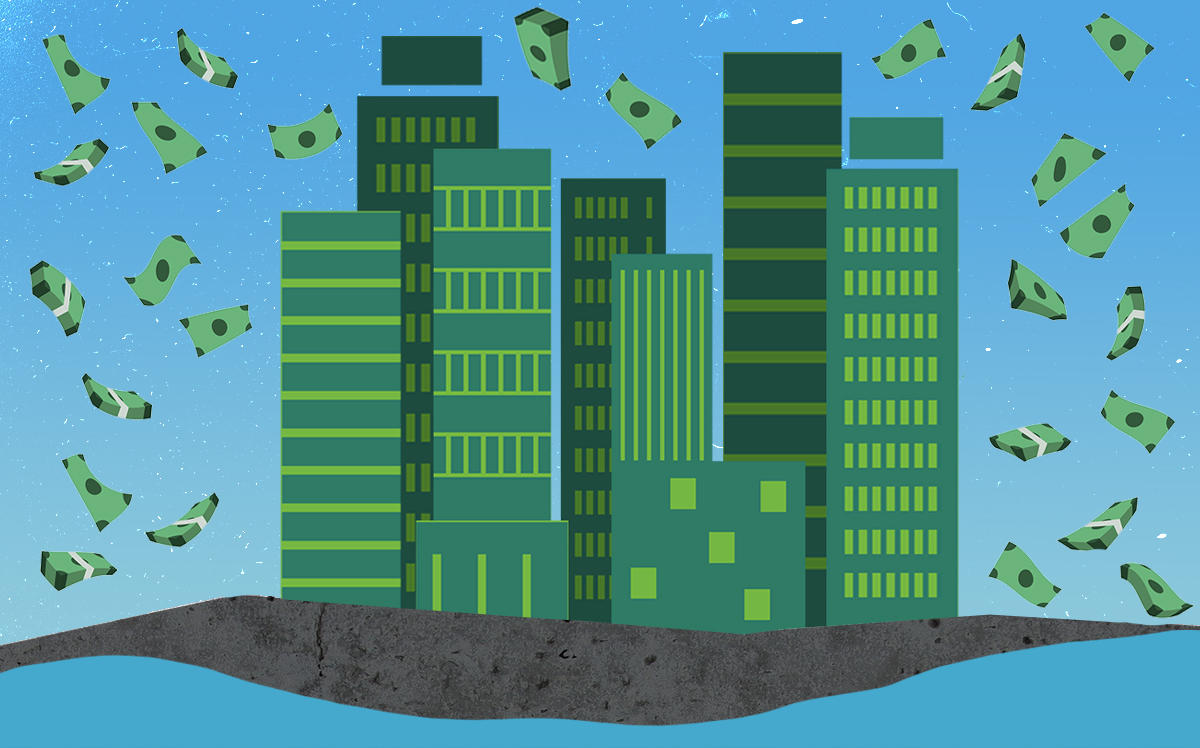The supply of unsold condos is growing in downtown Miami, as the pandemic continues to pummel South Florida’s economy.
Greater Downtown Miami has more than 30 months — or two-and-a-half years — of supply of condos, and 100 months — or more than eight years — of supply of luxury units, according to an analysis of Multiple Listing Service data by Condo Vultures Realty. Both figures are based on sales during the first six months of the year in the area between Edgewater and Brickell, east of I-95. The MLS does not typically include preconstruction sales.
The roughly 30 months of supply of all condos in the area is based on 711 sales that closed between January and June, for an average of about 119 sales per month. As of Tuesday, there were 3,579 condo listings in Greater Downtown Miami, asking an average price of about $758,000. Meanwhile, the average closing price for the first half of the year was $511,000.
The luxury market is faring much worse. Only 36 units sold between January and June, for an average of just six units sold a month. (Units asking at least $1 million are considered luxury.)
“This is giving me flashbacks to 12 years ago in 2007, when the Miami condo market started to go bad,” said Peter Zalewski, principal at Condo Vultures Realty. “Early indications are that this pandemic combined with the oversupply that already existed is going to turn this into a serious buyer’s market.”
Currently, about 600 luxury condos are on the market asking an average price of $2.05 million. Twenty-six luxury condo sales are pending, Condo Vultures’ data shows.
On the flip side, Zalewski pointed to the strengthening single-family home market amid the pandemic, though sales are concentrated in the high-end, in markets like Miami Beach and Palm Beach. The majority of condos east of I-95 in Miami-Dade are in Greater Downtown Miami, he said.
It doesn’t help that the shadow rental inventory is also growing, Zalewski said. There are two types of shadow rental inventory: units that individual landlords put on the market, which are typically condos, and those that institutional owners will lease out, oftentimes without using the MLS. Both individual condo landlords and institutional owners are dropping their prices and offering deals on units, Zalewski said. Each represents about half of the market.
There are nearly six months of supply of shadow rental units listed on the MLS, based on an average of 541 leases signed in the first six months of this year, he said. During that six-month period, a total of 3,245 leases were signed in Greater Downtown Miami. Slightly less, 3,167 units, are currently on the market for rent as of this week.
“There’s too much product, and people do not want to live in a 500-unit building with 700 people,” Zalewski said.
Individual condo owners who typically rent their units out are faced with a dilemma, he said. “Do they continue to pay their mortgage, or do they begin the process of trying to unload early?” he asked.
Zalewski predicts that investors will continue to sell their condos at deep discounts compared to their purchase price, or to the market’s high. It’s already happening throughout South Florida. In July, billionaire hedge fund manager Clifford Asness sold his South Beach penthouse for $22 million, 15 percent less than he paid for it two years ago.
“The day of the all cash buyer is coming, and coming quickly,” Zalewski said. “Those all cash buyers are not looking to pay market value. They’re not even looking for a discount. They’re looking for a haircut.”
Write to Katherine Kallergis at kk@therealdeal.com
